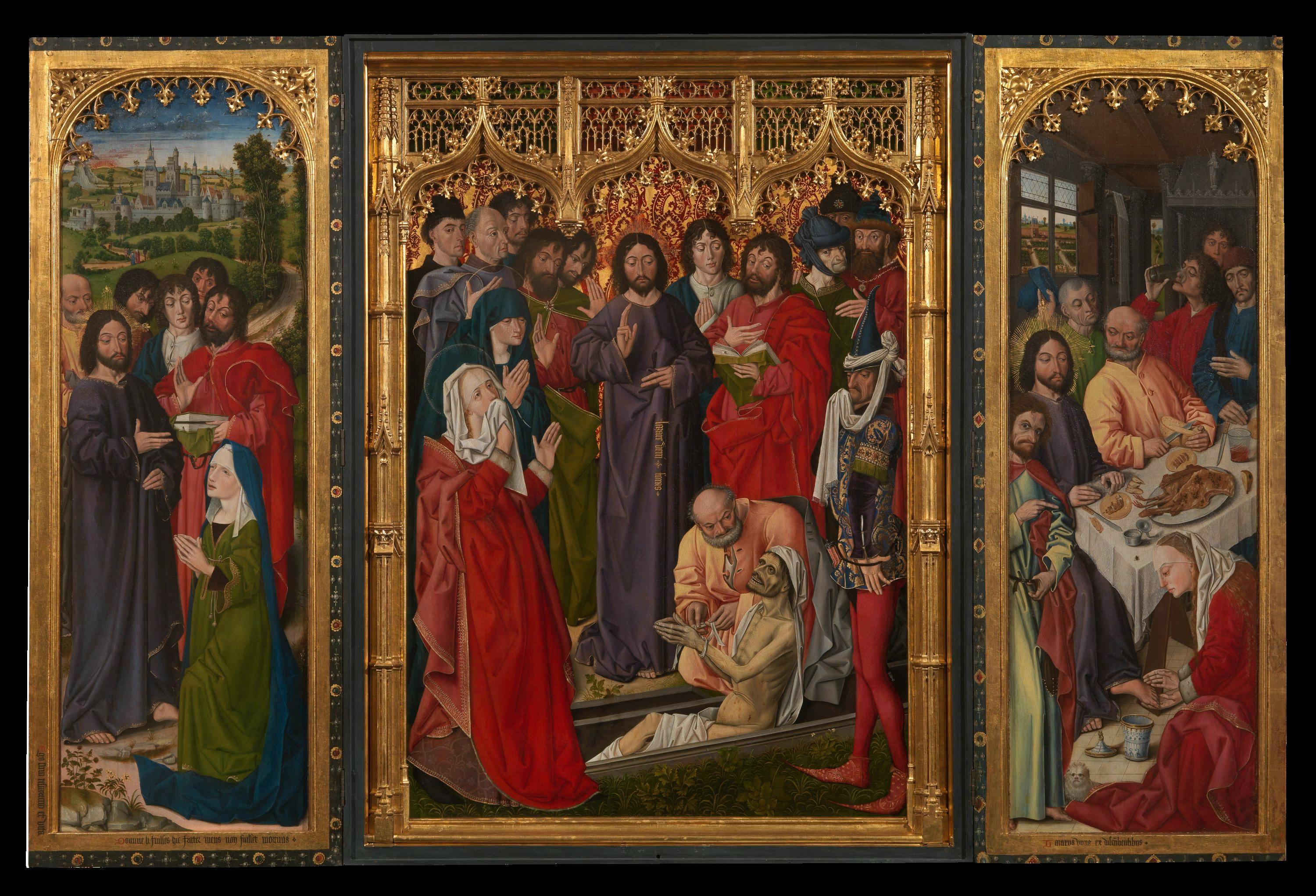Episodes from the life of Christ, Resurrection of Lazarus; on the back: The Virgin Mary, Francesco Coppini on his knees
Nicolas Froment (Uzès 1435 circa - Avignone 1485 circa)
The triptych illustrates the story of Lazarus and his sisters Martha and Mary. In the left-hand leaf, Martha approaches Jesus to apprise Him of her brother’s death; in the centre, Jesus raises Lazarus from the dead, triggering an emotional response from Marta, Mary and His apostles; and in the right-hand leaf, the story ends with the feast in the house of Simon the Pharisee, where Mary honours the Saviour by anointing His feet. On the back of the panels, the donor, Francesco Coppini, accompanied by another two unidentified figures, is portrayed on the right-hand panel as he prays before the Virgin and Child, depicted on the left-hand panel. An inscription below bears Nicolas Froment’s signature and the date 1461.
It was painted by Nicolas Froment, a painter born in Picardy, of whom only a handful of paintings has survived and who is known chiefly for his work in Provence, from at least 1465, in the service of King René d’Anjou. The triptych, depicting the Raising of Lazarus, Froment’s oldest known work to date, was painted for a prelate from Prato named Francesco Coppini who lived in Flanders, England and France from 1459 to 1462, performing various tasks for Pope Pius II Piccolomini. The realistic portrait on the back of the right-hand panel of the triptych reveals the features of this enterprising, cultured and ambitious prelate. Born into a humble Prato family in 1402, Francesco embarked on a career in the Church and became a skilled lawyer, whilst also earning recognition for his diplomatic talents. Appointed Bishop of Terni in 1458, he was sent by Pope Pius II to Flanders and to France the following year to collect "Peter’s pence", after which he travelled to England in an effort to broker peace between the Houses of York and Lancaster. Coppini’s support for King Edward IV of the House of York, who was crowned in 1461 after deposing King Henry VI of the House of Lancaster, was disapproved of by the pope who recalled Coppini to Rome and stripped him of his bishopric and his assets in 1463. Coppini donned the Benedictine habit and spent the last few months of his life in the monastery of St. Paul’s Without the Walls, outside Rome, where he died in 1464. Coppini was stripped of his titles and his assets were confiscated. The triptych probably came into the ownership of the Medici family and was subsequently donated to the Franciscan convent of Bosco ai Frati, where it remained until the convent was suppressed under Napoleon. It entered the Uffizi in 1841.
Influenced by Flemish painting, Nicolas Froment tends to characterise his figures’ features almost to the point of caricature. His meticulous depiction of costumes, objects and bizarre details such as the fly on a table laid for a meal turn the religious scene into a constant source of wonder. The landscapes in the background conjure up the fairy-tale world of northern European courts in the 15th century.
D.Parenti, Nicolas Froment. The restoration of the Resurrection of Lazarus, a cura di D.Parenti, 2017
